August 14, 2018
The search party had been working for 10 hours when they finally saw it on the sonar.
A Cessna 180 float plane sat peacefully on the floor of Peter Pond Lake.
The boat was silent. The lake was calm. Garry Kozak, Donald Kapusta and two others had finally found the plane that went missing in northern Saskatchewan 59 years ago.
The crash left behind a new mother with a baby boy only a few months old and a pregnant widow who wouldn’t live to see the plane found.
'Everyone rushed to the North'
Ray Gran was flying that Cessna on Aug. 20, 1959. He and Conservation Officer Harold Thompson left Buffalo Narrows en route to La Loche.
A dense fog rolled in not long after the men embarked. Gran tried to turn around, but crashed into Peter Pond Lake, just west of Buffalo Narrows.
Articles from the time say five aircraft searched for the missing men. The lake was dragged. A diver searched its depths. Come winter a snowmobile with an electromagnetic device patrolled the frozen lake.
The Canadian Press reported the search was called off on March 15, 1960.
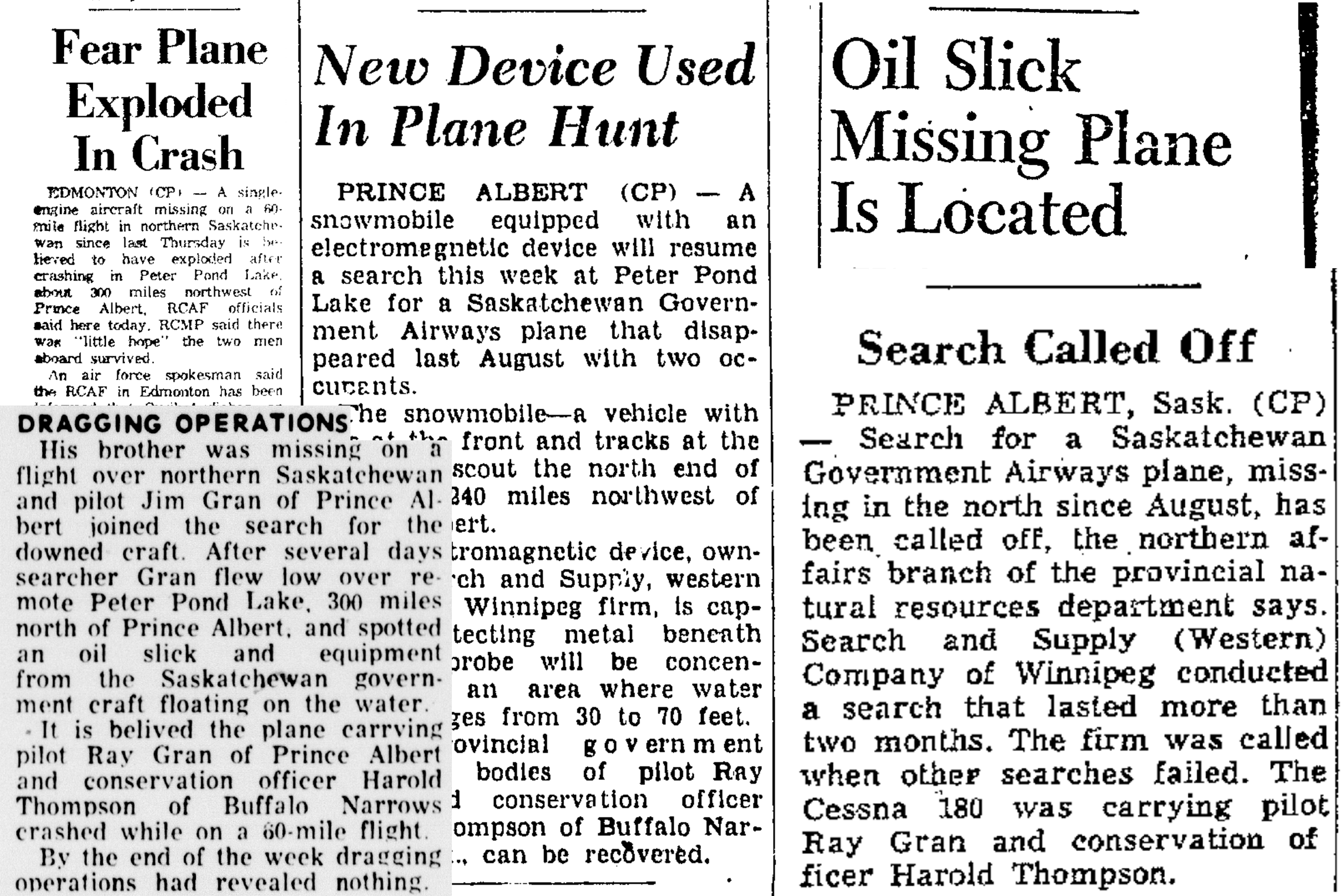

Gran’s wife Marcella was six months pregnant when the plane went down. Her son-in-law Donald Kapusta said she would often fly with Gran, but that day he told her to stay back because she was too close to term.
Linda Gran — now Linda Kapusta — was born a few months after the crash.
Harold Thompson, the conservation officer on the plane, had married his wife Charlotte on December 6, 1958. Their baby boy Parry was only a few months old when the plane went down.
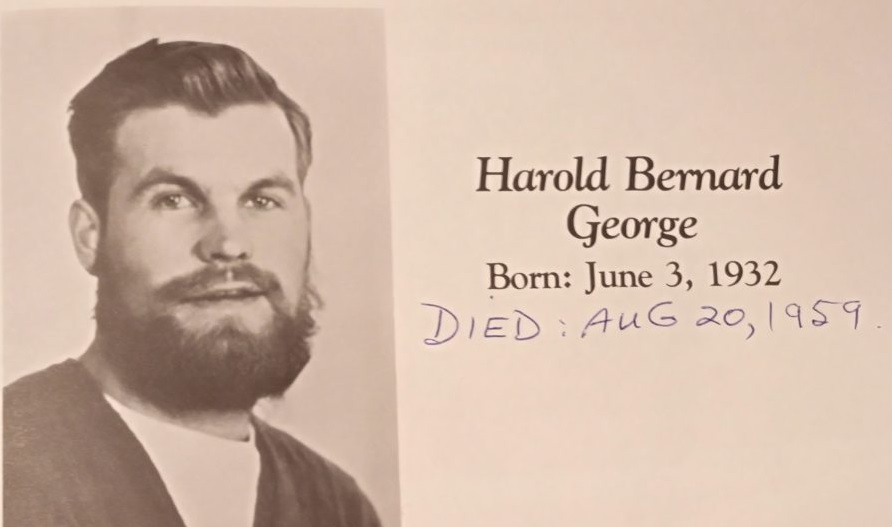
Thompson was the eighth child of 13. His younger sister Arlene Mar (formerly Thompson) said he was happy-go-lucky and would sing a lot. She thought Harold may have survived, even after the searches turned up nothing.
“I thought many a times I saw Harold. And I kept on looking because he was a healthy strapping guy,” she said.
She was at home in Tisdale, Sask. when the crash happened.
“Everyone rushed to the North. I manned the phone,” she said. “And we waited and waited for results and we got it now.”

'The search had now begun'
Linda and Donald Kapusta were visiting friends in Saskatoon in 2017 when they met up with an old neighbour, Don Miller, who knew Ray Gran from years ago.
Miller told them about consumer-level sonar.
“For Linda and me, the preparation for the search had now begun,” Donald said.
The couple began researching the technology and found Garry Kozak, an expert in underwater side scan sonar.
“I understood their passion,” Kozak said. “What he was trying to do. He really didn’t understand fully the complexity in mounting an underwater search.”
Kozak gave Kapusta a list of things to do before the search. It wasn’t easy. It involved gaining access to Transport Safety Board and RCMP records from the crash.
It took time. The couple gathered what they could. They phoned Kozak a couple months later and asked again for his help.
“I looked at [the research]. It opened up the possibility that the search could be done,” Kozak said at a reasonable time and cost.
“I said yes.”
'We have an airplane'
They prepared for the search for months. They hauled a boat from Toronto and did a run of the lake the day before the search. They finally began the search on July 30, 2018.
The process involved towing a sonar device behind a boat. The device sends sound waves out sideways, with a dead zone directly beneath it. Searchers have to criss-cross the area to ensure full coverage.
The group divided the search area into four quadrants and assigned them numbers, one being the most likely and four the least. Kozak said each quadrant would take around two days.
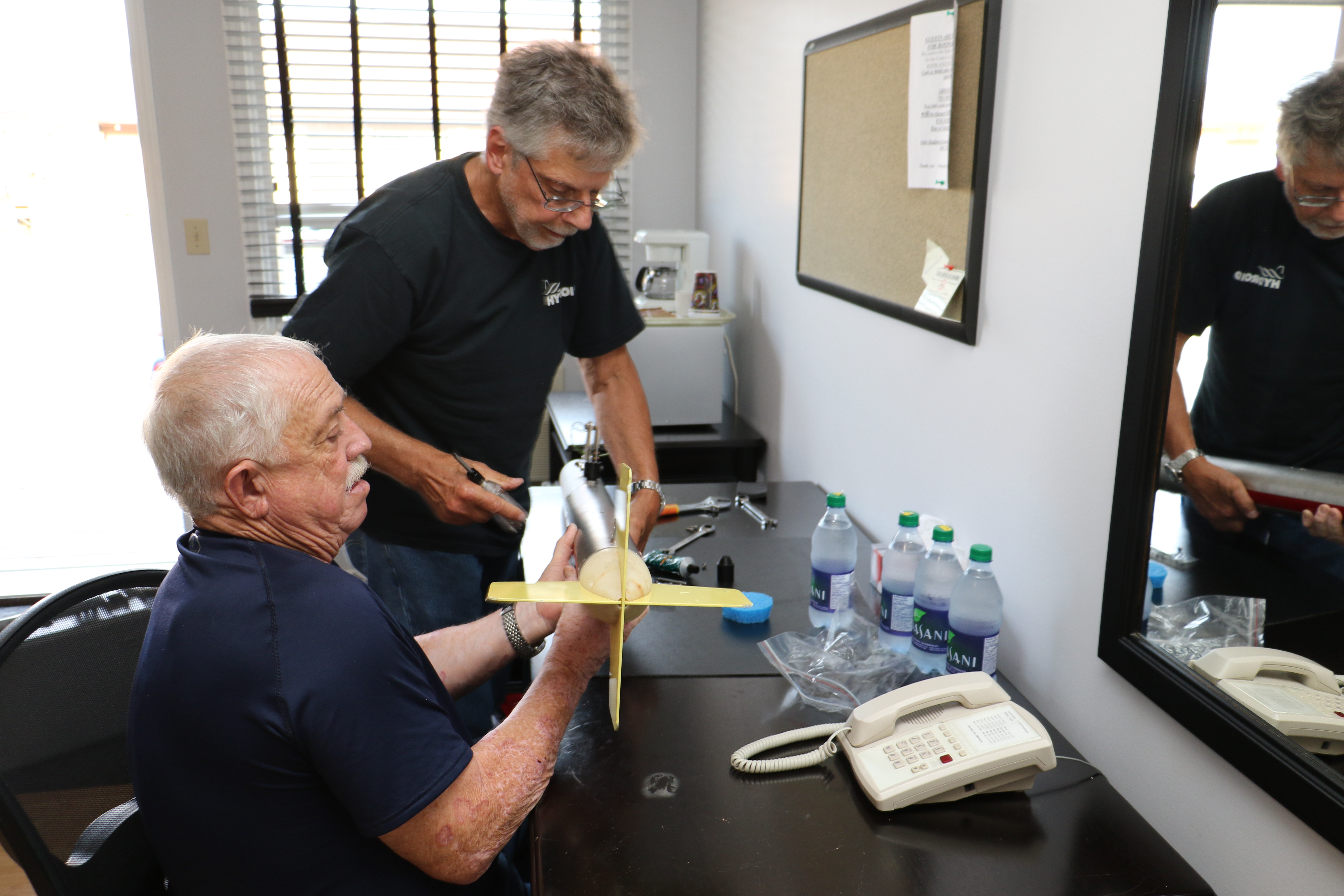
On their first day out, Kozak made a mistake.
“I didn’t terminate the line at the end of quadrant one. We continued right through to quadrant 2,” he said.
The group was searching an area they weren’t supposed to be in for a few more days.
At 6 p.m., their day was almost over. At first the sonar went directly over the plane, missing it.
“It’s a dead area directly under these towed sensors,” Kozak said.
On the next pass it got a clear image.
“We have an airplane,” Kozak said

“For me, it was a great relief,” Kozak said. “Just very satisfying that we found it so darn quickly.”
Kapusta said the plane is still largely intact.
“It’s lying on its back and is easily recoverable with proper equipment,” Kapusta said. “[Kozak] fully expects the remains of my father-in-law and Harold Thompson to be there.”
![Garry Kozak reads out the information on the sonar when the plane had been located. Kozak said he gave a lot of credit to the Kapusta couple. “They’re sort of unique people to take on a challenge like this to try and finally define where Linda’s father had died.” (Submitted by Donald Kapusta)]](https://newsinteractives.cbc.ca/craft-assets/images/Photograph-7-Reading-out-the-Sonar.JPG)
The Kapustas informed the RCMP in Buffalo Narrows of the find. The RCMP notified Harold Thompson’s family soon after.
“I cried when I heard the excitement,” Thompson’s younger sister Arlene Mar said. “It was a happy day for me.”
Mar said she’s happy for the closure of knowing where the plane was.
“I looked and looked,” she said. “We’ve missed him.”
Mar said she and the other three remaining siblings have been in contact and are looking to the next step.
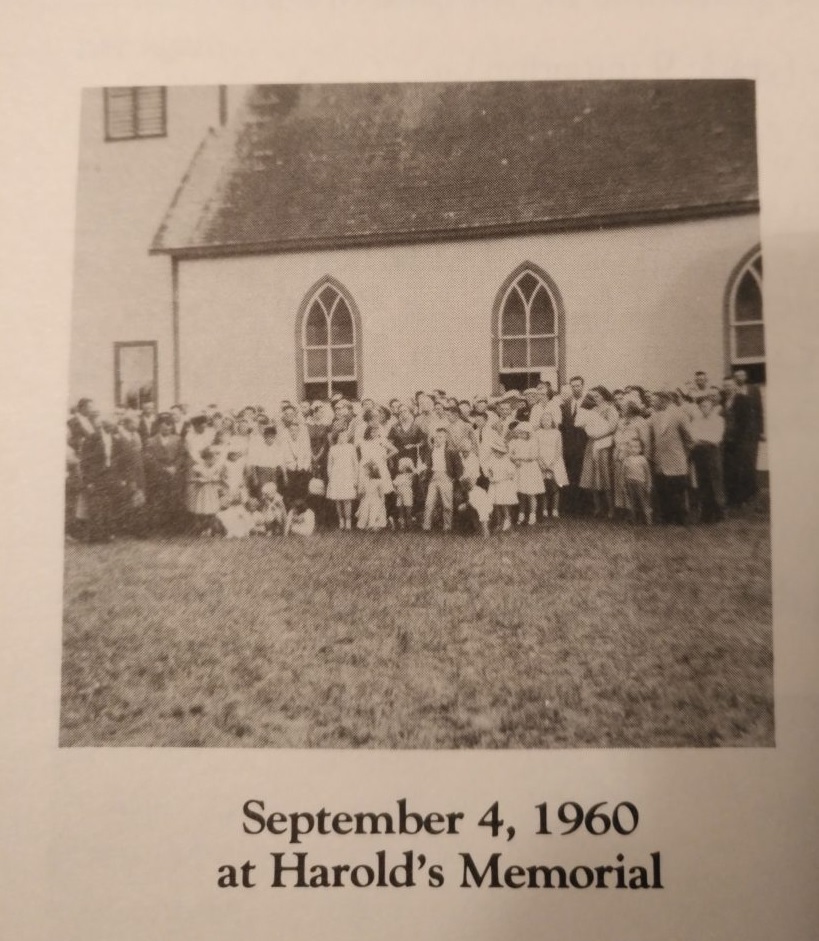
'She never got the news'
The Transportation Safety Board of Canada have decided not to take any further action. A representative said it is because they would not learn anything new or advance transportation safety by investigating.
RCMP said in a statement, “We have assessed the dive and what would be required to perform the dive but we’re not able to make the dive safe so we will not be able to dive on it.”
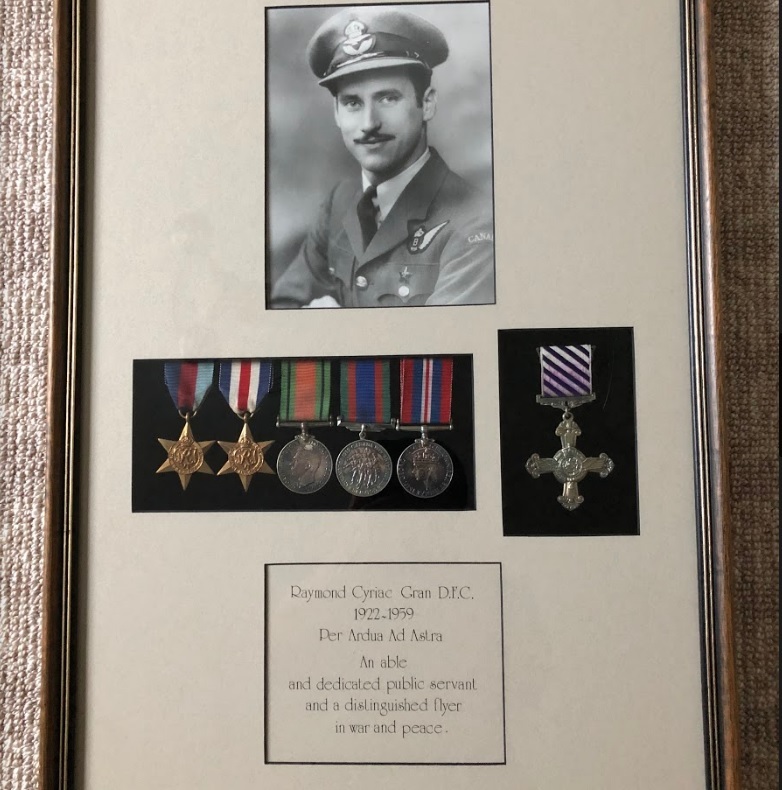
The Kapustas had chosen not to tell Marcella, Linda’s mother and Ray Gran’s widow, that they were looking into searching the lake.
“It’s been so long and we didn’t want to get her hopes up,” Donald Kapusta said.
The group got a call in Buffalo Narrows the morning after they found the plane. Marcella had died in the night.
“She never got the news,” Donald Kapusta said. “After about 59 years of waiting.”
